We are happy to announce Dana Awartani’s first solo exhibition in Hamburg. Awartani’s practice is rooted in traditional crafts from the Arab world, and is shaped by her thorough study of indigenous, ancestral, creative practices and their contemporary application. Remaining true to the aesthetic traditions of her forbears, her conceptual works explore themes of cultural heritage preservation, and the threat of destruction or loss, across the wider region.
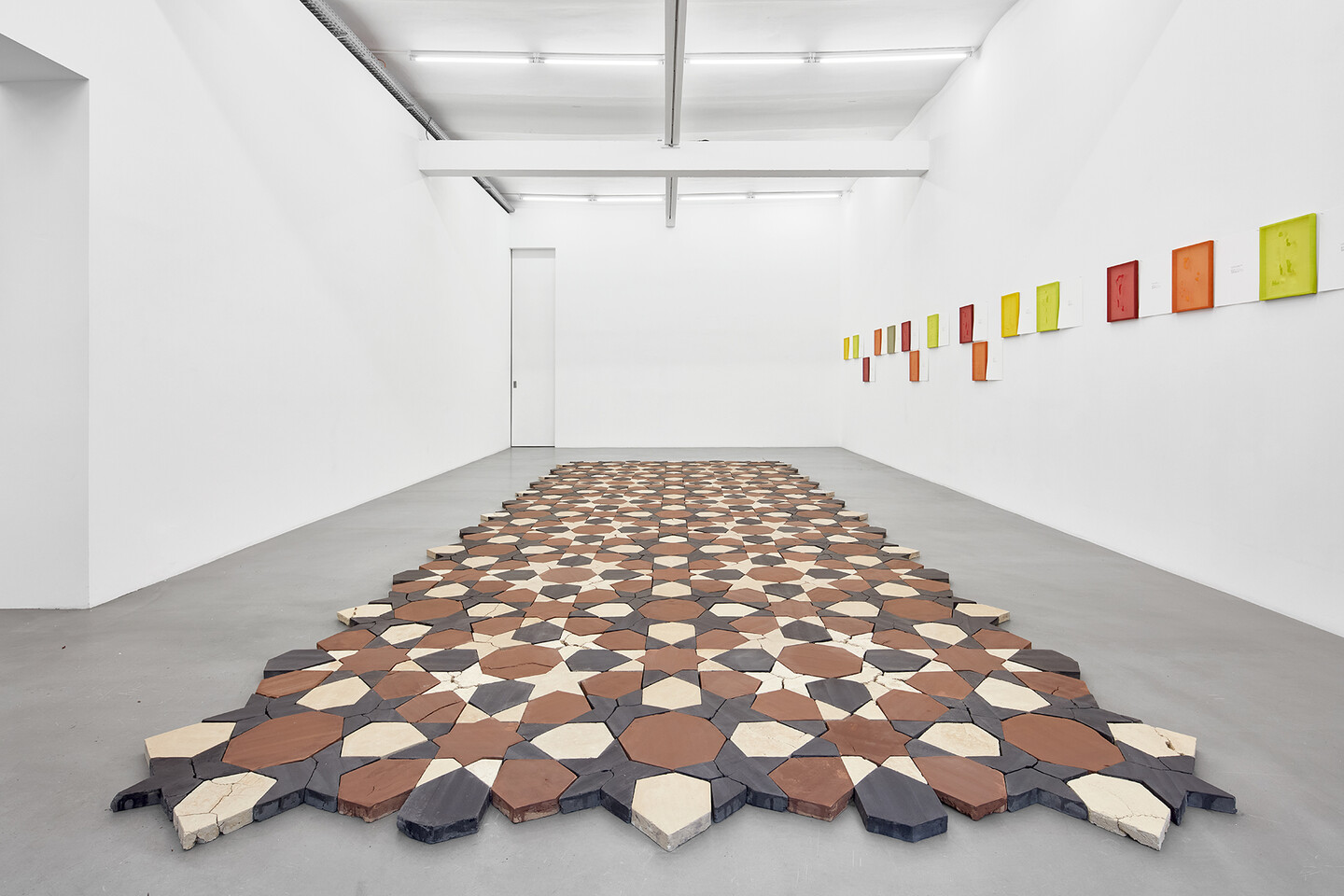
Standing by the Ruins is a title borrowed from an early pre-Islamic poetic form: wuquf 'ala al-atlal, known as “ruin poetry”. This motif is believed to have originated in the 6th century, with Imru’ al-Qais, the last king of the Kindite kingdom in the Arabian Peninsula, who lived in exile. Considered one of the greatest figures of Arabic literature, his most famous poem describes a character longing for his beloved while looking at a devastated campsite. With this, he became the precursor of a style that is still relevant today, a genre that reflects on love and loss, on destruction and the passage of time, through the lens of abandoned, destroyed or vanishing places.
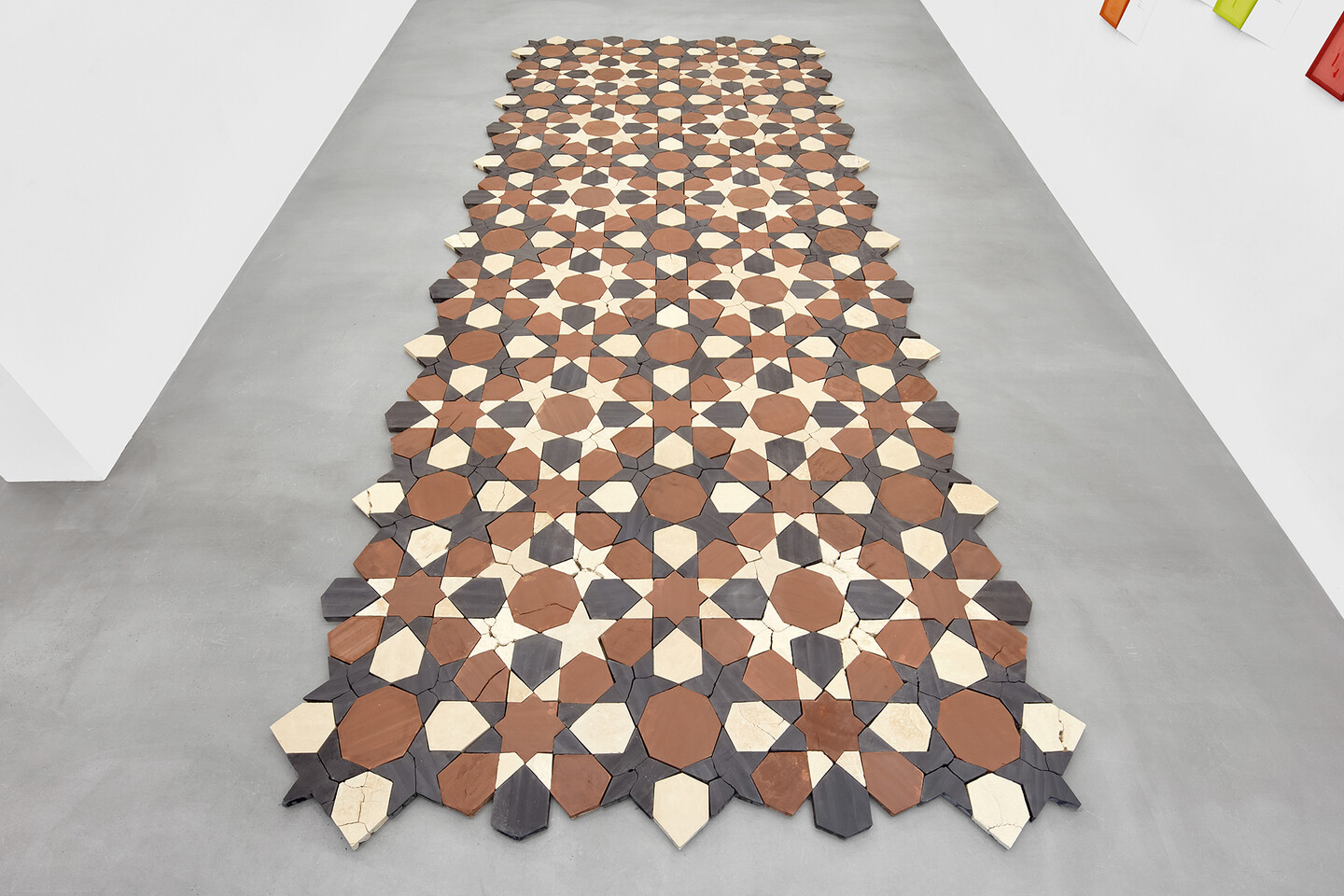
compressed earth, Courtesy the artist & Sfeir-Semler Gallery
Awartani’s central installation in the exhibition gives ruin poetry a physical body: a melancholic visual requiem, the work comprises around 730 clay bricks assembled to look like traditional patterned flooring at first glance. In reality, they replicate the geometric designs adorning the outside walls of Qasr Al Basha palace, one of Gaza’s most significant landmarks. Dating back to the mid-13th century, the building carries typical elements from Mamluk and Ottoman architecture and sustained heavy damage in the past year.
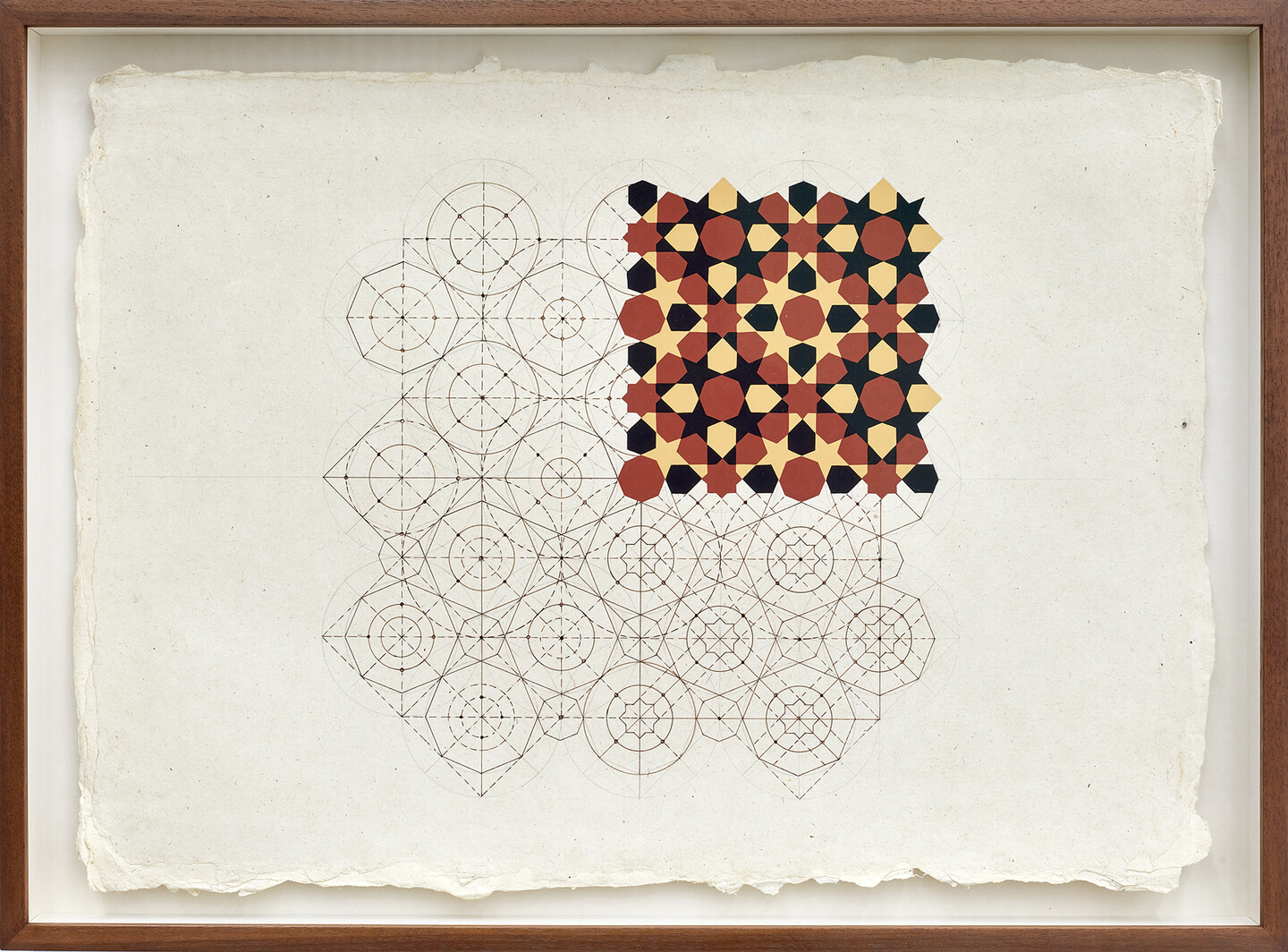
gouache and walnut ink on handmade cotton paper, 35 × 48 cm
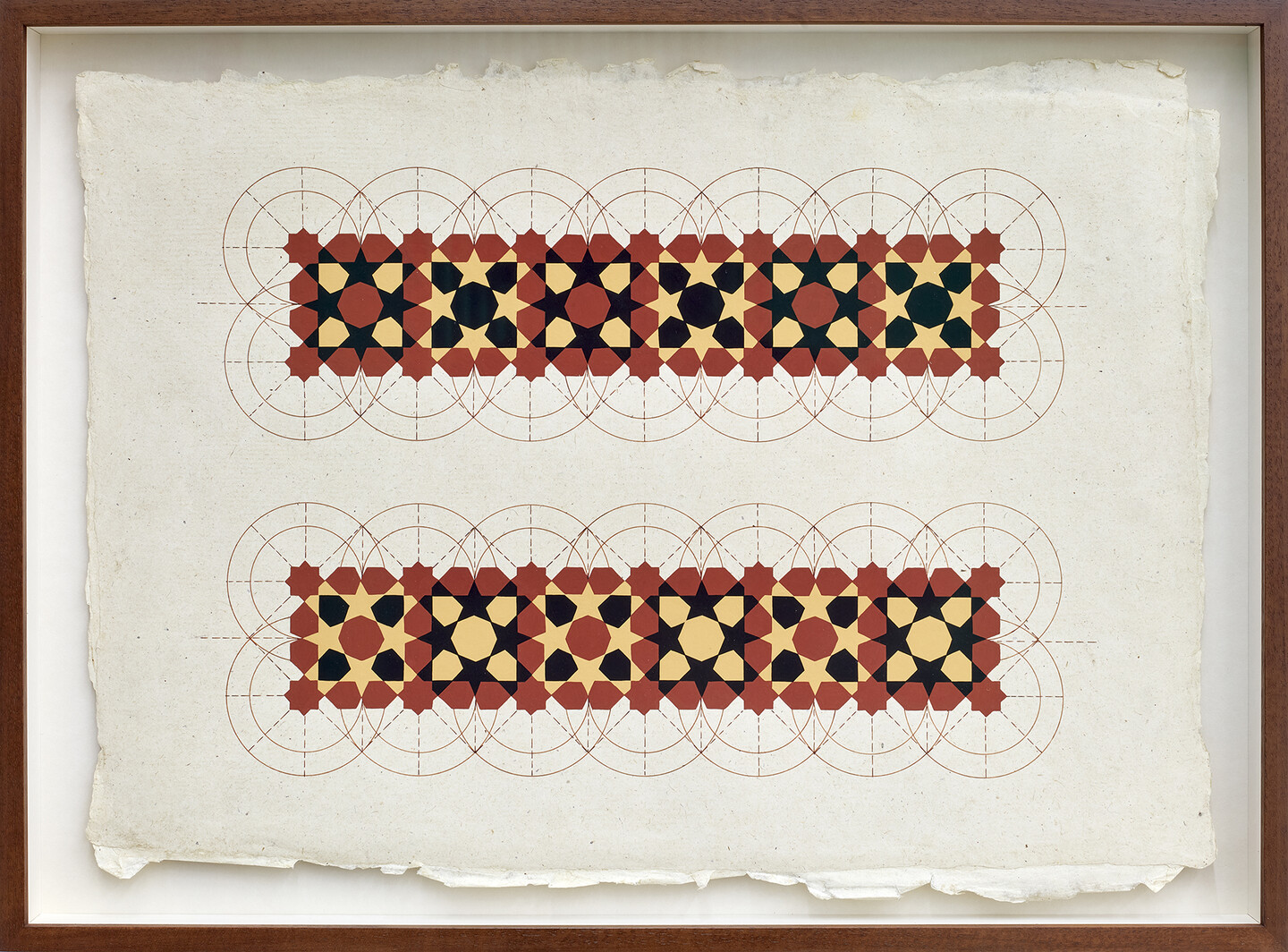
gouache and walnut ink on handmade cotton paper, 35 × 48 cm
Collaborating with artisans in Saudi Arabia, Awartani creates these bricks using ancient earthen construction techniques, but intentionally omits a crucial binding agent, allowing the patterned blocks to crack and deteriorate as they dry. In her attempt to retain traces of both disappearing architecture and intangible heritage, the artist mirrors the vulnerability of the original structure and brings to light a slowly fading craftsmanship.
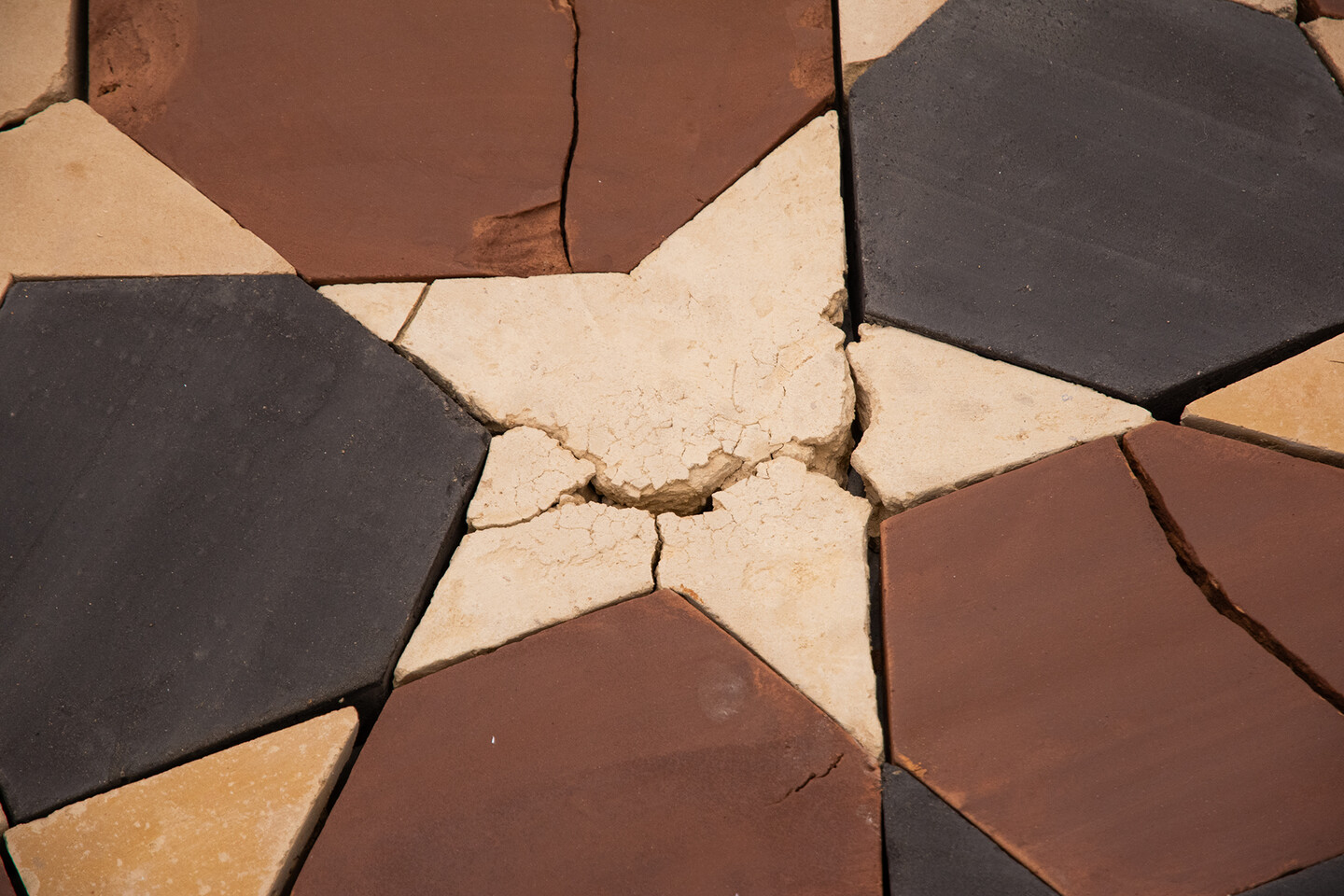
Compressed Earth, Dimensions variable
On the surrounding walls, Let me mend your broken bones is an ongoing series of brightly colored fabrics, stretched onto frames, interspersed with printed text. It systematically catalogues heritage sites from Iraq, Syria, and Palestine, using the Antiquities Coalition’s reports to document their fate amidst unrest, wars, and acts of terrors. Information on each site’s location, status, and the events that led to its destruction is paired with an abstract representation of the site on hand-dyed silk cloth in yellow, orange, green or red. Awartani dyes these fabrics in Kerala, India, using natural dyeing techniques and locally foraged medicinal plants to imbue the fabrics with therapeutic properties.

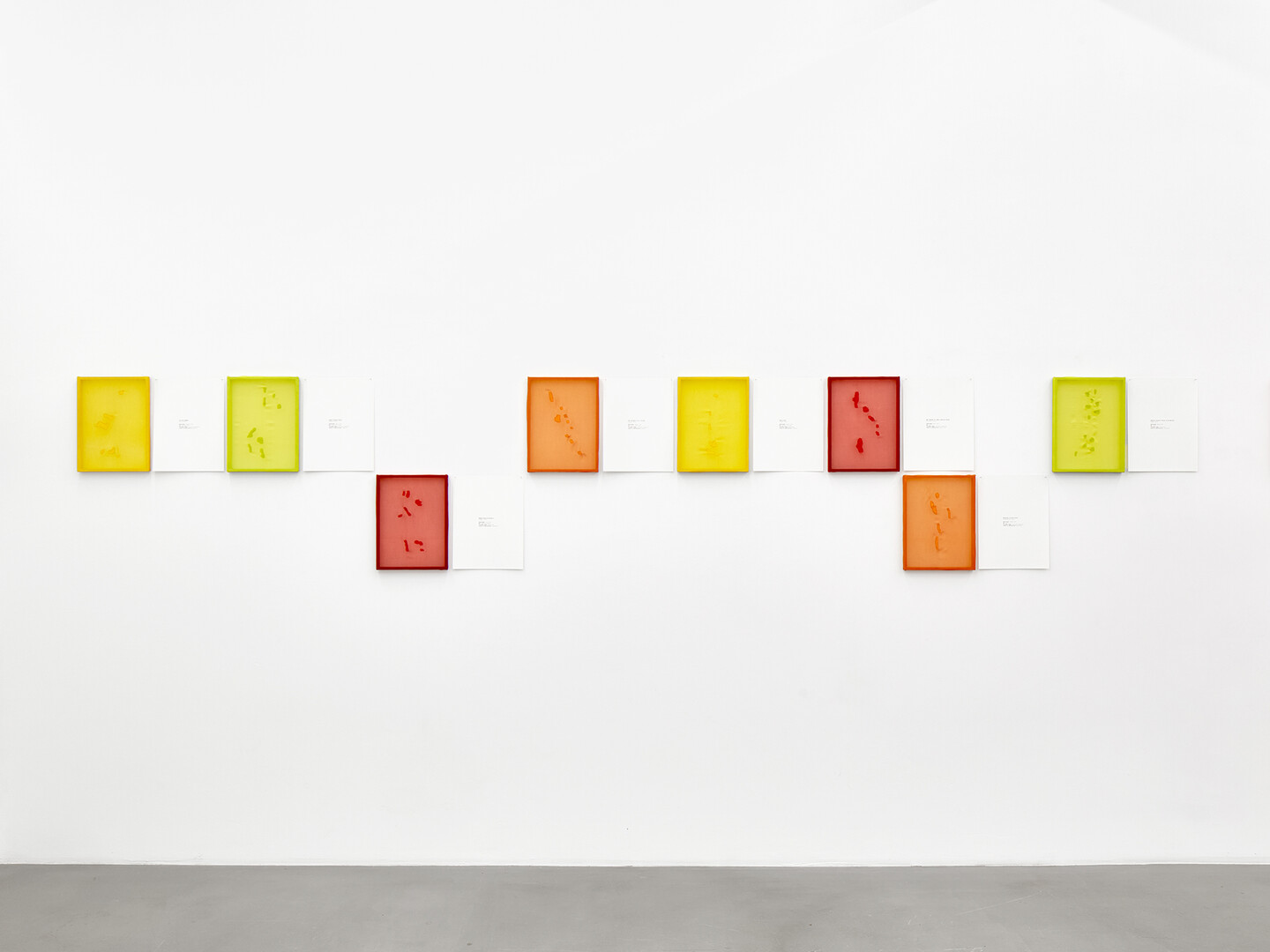
The cloth is then torn and cut to follow the patterns of broken stones from images of destroyed sites circulating online. Tenderly darning each tear in the fabric, as if trying to seal a gaping wound, Awartani mourns these losses, and reckons with the effect of these violent events on our collective memory. Rather than making invisible repairs or decorative embroidery, as traditional darning would, she leaves discreet yet noticeable scars, testament to trauma and grief, but also to healing, recovery and hope.
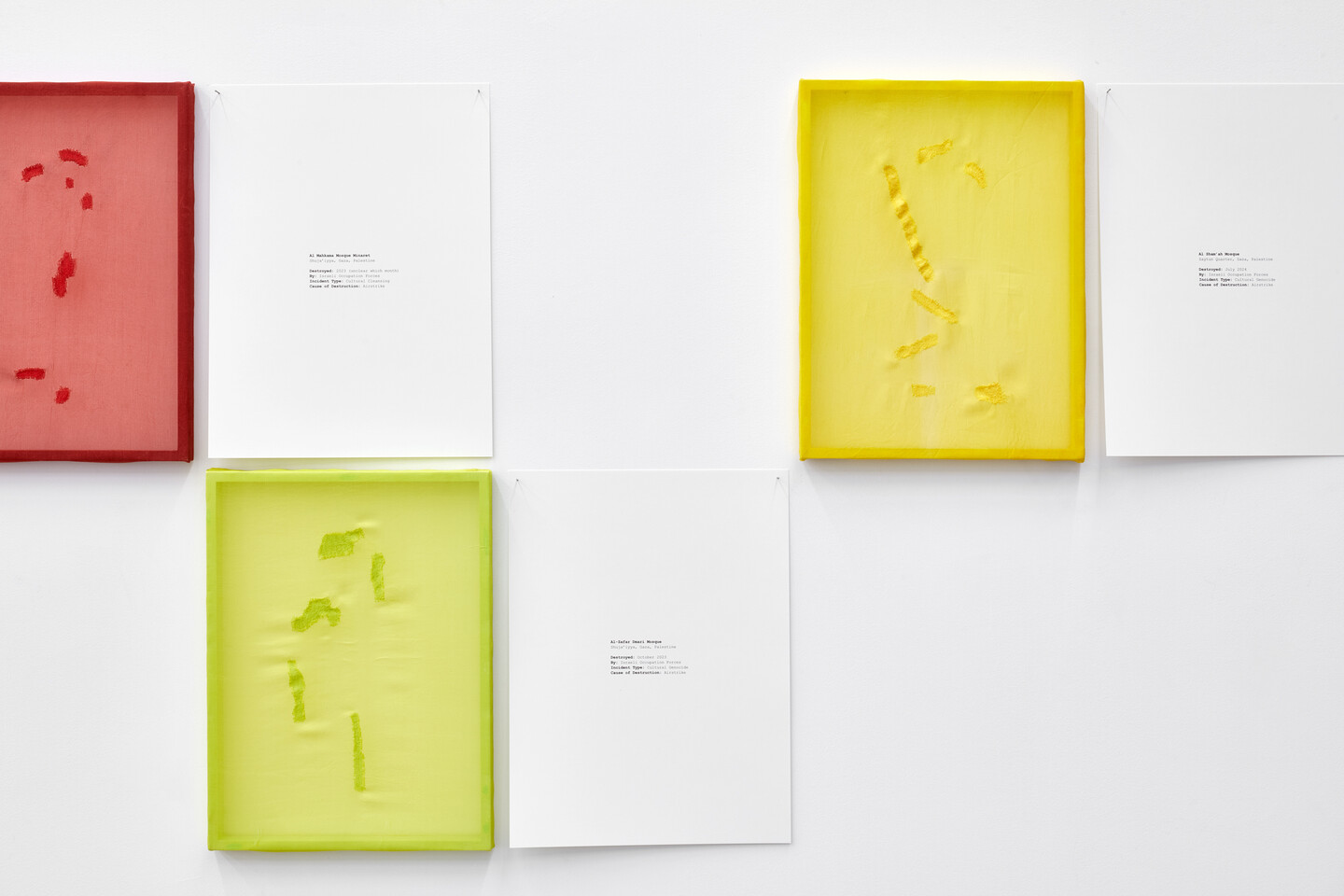
darning on medicinally died silk, 27 cm, Courtesy the artist and Sfeir-Semler Gallery
